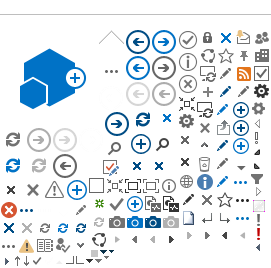Global Polio Eradication Efforts
Before the launch of the WHO's Global Polio Eradication Initiative (GPEI) in 1988, wild-type poliovirus infected about 400,000 new individuals annually in more than 125 endemic countries. Due to global efforts through GPEI, polio infection rates have fallen by 99.99% since then, with wildtype poliovirus serotypes 3 and 2 (WPV2 and WPV 3) eradicated, and WPV1 limited to low endemicity in just two countries. To reduce the frequency of circulating vaccine-derived poliovirus (cVDPV), the Sabin polio vaccine virus type 2 was withdrawn in 2016 and synchronized global efforts are ongoing to eliminate cVDPV by switching from the use of the bivalent oral polio vaccine to monovalent (mOPV) and injectable inactivated poliovirus vaccines (IPV).
Poliovirus Containment
The world is working hard to eradicate all WPV and vaccine-derived poliovirus strains. Once global eradication of WPV1 (and thus all three serotypes of wild-type poliovirus) is achieved and OPV use is discontinued, population immunity to polioviruses will decline. Under these conditions, the public health consequence of intentional or inadvertent poliovirus re-introduction into the population will be severe. This risk will remain high as long as biomedical research entities retain poliovirus infectious material (IM) and potentially infectious materials (PIM). Therefore, in preparation for the global elimination of all WPV strains and the sequential cessation of OPV, the WHO initiated the Global Action Plan (GAP) to minimize polio facility-associated risk. In support of these efforts, the United States Department for Health and Human Services designated the Centers for Disease Control and Prevention (CDC) as the United States National Authority for the Containment of Polioviruses (U.S. NAC). Entities and facilities with poliovirus PIMs are required to account for all such materials to the NAC and to carefully consider the material, personnel and other resources needed to attain the high regulatory bar for polio PIM retention, especially those with WPV/VDPV potential. Entities intending to continue working with WPV1 and WPV3 beyond December 2023 must apply to be registered as a “Polio Essential Facility (PEF)" and demonstrate compliance with the facility, immunization coverage and environmental safeguards prescribed under the GAP IV Risk Control and Biorisk Management framework.
NIH Polio Eradication Program
Poliovirus PIM surveys across the NIH showed that some laboratories had polio PIM in their inventories. Considering the cost implications for retaining poliovirus PIM after 2023, the NIH will not seek PEF status. However, Division of Occupational Health & Safety has established the NIH Polio Eradication Program in the Biorisk Management Branch to ensure the NIH is compliant with GAP IV requirements. The program, overseen by Dr. Kenneth Shenge, has engaged with NIH Principal Investigators across all campuses of the NIH to provide support toward identifying polio PIM, destroying or inactivating the material in a manner that is consistent with each program's research objectives, or transferring it to a registered PEF.
In 2023, the program achieved the significant milestone of transferring the last wild-type poliovirus specimen out of the NIH. Also, of 31 PIs with poliovirus PIM, 21 PIs achieved complete compliance with GAP IV requirements by destroying their PIM holdings, inactivating them, or having them cleared as not likely to contain poliovirus. The remaining PIs are at various stages of achieving full compliance. These success stories are a testament to the collaborative spirit within the NIH community!
Looking Ahead
Although the NIH made significant progress toward eradicating polio from all our campuses in 2023, the work is not yet done. Over the next 12 months, the program aims to complete the cataloging and accurate reporting of all polio PIM across the NIH. In the process, polio PIM specimens with scientific value will be identified and requests made to the NAC for their retention. Such specimens will then be segregated and managed under site-specific biorisk management procedures.
The impact of eradicating polio from the NIH extends far beyond our institution; it ripples through communities worldwide, shaping a healthier, more secure future!
Point of Contact
Kenneth Shenge, Ph.D., MPH
Biorisk Management Branch
Division of Occupational Health and Safety
National Institutes of Health
Kenneth.shenge@nih.gov
Office: (301) 451-5825
Cell: (443) 243-6107
